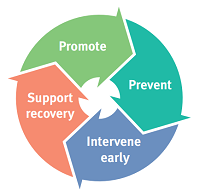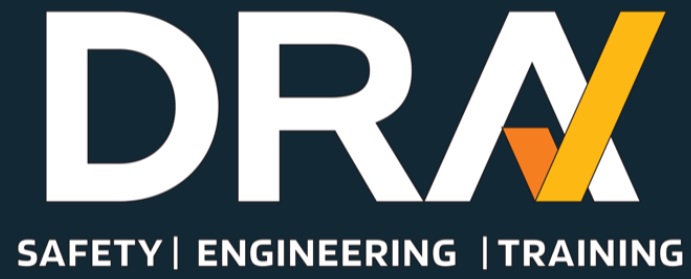
The World Health Organisation (WHO) defines mental health as ‘a state of well-being in which every individual realises his or her own potential, can cope with the normal stresses of life, can work productively and fruitfully and is able to make a contribution to her or his community’. Mental illness can affect anyone, of any age and background. However, with support most people can and do recover. Achieving and maintaining good mental health and well-being is important for everyone.
We have developed this free toolkit to assist organisations in getting these conversations started. While creating a mentally healthy workplace is everyone’s responsibility, mental health is a leadership issue, and change must start at the top. Business owners and organisational leaders play a critical role in driving policies and practices that promote mental health in the workplace. The process can be started with a simple conversation, but frontline managers and supervisors often feel unsure of where to start. WHS Qld offer assistance with some basic information.
While building a mentally healthy workplace makes good business sense, controlling psychological health and safety risks is also a legislative requirement. The Work Health and Safety Act 2011 states that Persons conducting a business or undertaking (PCBU) have a duty to ensure the health and safety of workers at the workplace, with health defined as both physical and psychological. The Work Health and Safety Officer course (WHSO) includes discussions in mental health in the workplace along with numerous other safety related topics.
Reasons for developing mental health strategies for mental health in the workplace.
A safe and healthy workplace is good for business, and creating a safe and healthy workplace makes good business sense by:
– reducing costs associated with worker absence from work and high worker turnover.
– achieving greater staff loyalty and a higher return on training investment.
– minimising stress levels, and
– improving morale.
Mental illness can affect anyone. Mental health problems, especially depression and anxiety, are common in the community. While some people have a long-term mental illness, many may have mental illness for a relatively short period of time. Most of us will experience a mental health issue at some time in our lives or be in close contact with someone who has experienced mental illness.
Australian statistics and industry research into mental health in the workplace
The Australian statistics and industry research into mental health in the workplace is extensive. The National Mental Health Commission (NMHC) in Australia has conducted several studies on the prevalence of mental health issues in the workplace and the impact of mental health on productivity and workplace performance. A 2019 report from the NMHC revealed that one in five Australians are currently experiencing a mental health disorder, and that mental health conditions are the leading cause of disability in the workplace.
Additionally, the report found that mental health conditions cost the Australian economy approximately $60 billion each year in lost productivity. The report also highlighted the need for businesses to adopt a more proactive approach to mental health and wellbeing in the workplace, including providing support to employees and creating an environment where employees feel supported and safe.
What are the Legal Obligations relating to Mental Health in the workplace?
As an employer, you have legal obligations in relation to the management of mental illness in the workplace.
– WHS legislation requires you to ensure your workplace is safe and healthy for all workers.
– disability discrimination legislation requires you to ensure your workplace does not discriminate against or harass workers with mental illness. You are required to make reasonable adjustments to meet the needs of workers with mental illness.
– privacy legislation requires you to ensure personal information about a worker’s mental health status is not disclosed to anyone without the worker’s consent.
– you are also required under Commonwealth industrial law to ensure your workplace does not take any adverse action against a worker because of their mental illness.
In turn, all workers (including those with mental illness) are legally obliged to:
– take reasonable care for their own health and safety
– take reasonable care that their acts and omissions do not adversely affect the health or safety of others
– cooperate with any reasonable instructions to ensure workplace health and safety.
The things at work that can harm mental health are known as psychosocial hazards. These hazards can also cause physical harm.
Psychosocial hazards related to mental health in the workplace include
– job demands
– low job control
– poor support
– lack of role clarity
– poor organisational change management
– inadequate reward and recognition
– poor organisational justice
– traumatic events or material
– remote or isolated work
– poor physical environment
– violence and aggression
– bullying
– harassment, including sexual harassment, and
– conflict or poor workplace relationships and interactions
Sources of Psychosocial hazards associated with mental health in the workplace
– the design or management of work.
– a work environment.
– plant (e.g. equipment) at a workplace, or
– workplace interactions or behaviours.
Under the model WHS laws, a person conducting a business or undertaking (PCBU) must manage the psychosocial risks in the workplace. SafeWork Australia provide mental health in the workplace statistics and provide a range of resources that are readily available on how to improve mental health in the workplace.
Duties for Mental Health in the Workplace
Mental health is everyone’s business. It is estimated that, at any point in time, 1 in 6 working age people will be suffering from mental illness. A further one-sixth of the population will be suffering from symptoms associated with mental ill health, such as worry, sleep problems and fatigue, which, while not meeting criteria for a diagnosed mental illness, will be affecting their ability to function at work. Given the statistics, it is likely that you will come across mental illness in your workplace.
If you or a colleague are feeling depressed, stressed or anxious there are services to help.
• Lifeline
• Beyond Blue
• Black Dog Institute
• SANE
If you are interested in our WHS Consultancy services, you can contact David, Andrew or Mark to discuss your Health and Safety Issues.
We have qualified and certified Safety Consultants that can assist you in your business and offer a range of WHS consulting services along with general and specific health and safety training courses.
Contact us today for an obligation free quote on any of our services.

